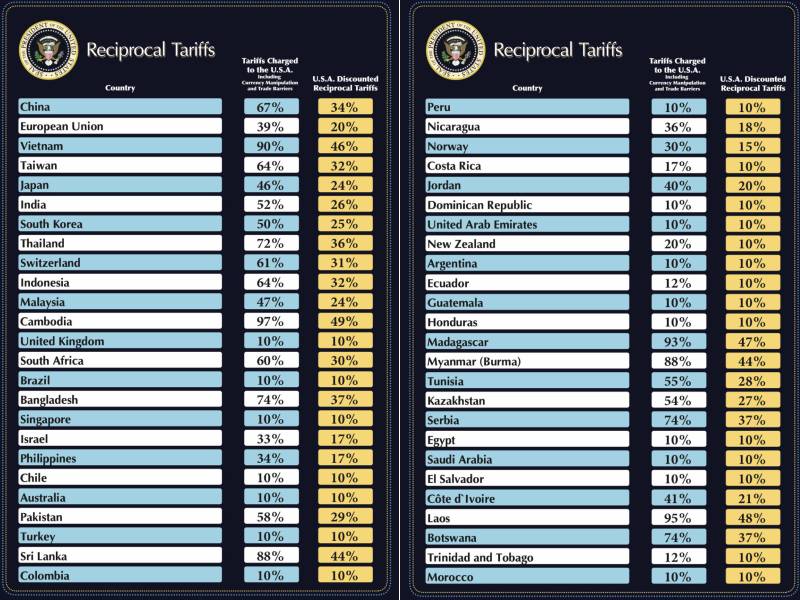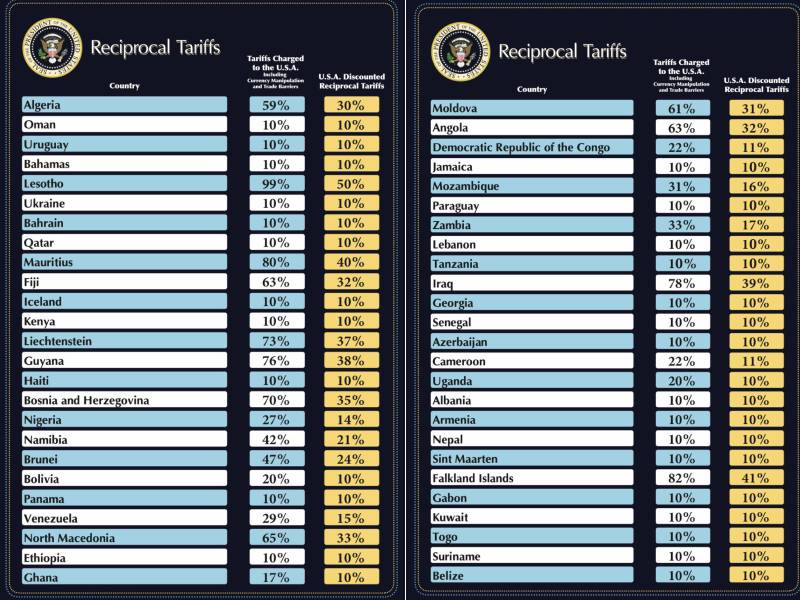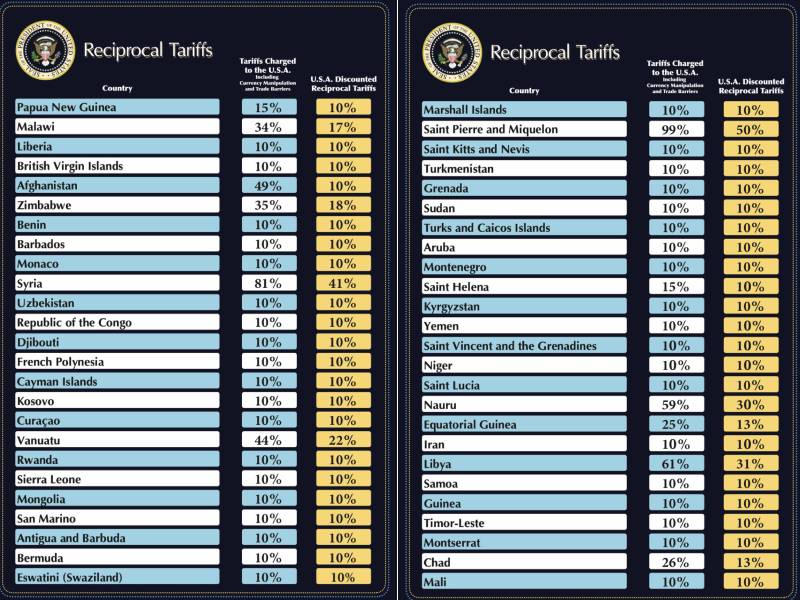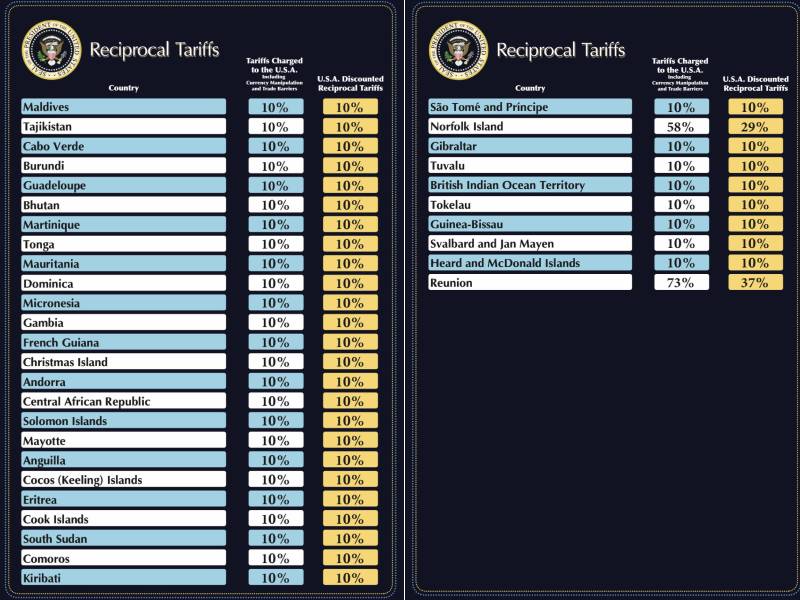President Donald Trump announced sweeping new tariffs on imports, including a baseline 10% tariff on nearly all goods entering the U.S. and significantly higher rates for dozens of countries deemed to have unfair trade practices. The new policy, unveiled during a Rose Garden event the White House dubbed “Liberation Day,” marks a dramatic shift in U.S. trade strategy with far-reaching implications for global supply chains.
The baseline tariff will apply to goods from nearly every country except Canada and Mexico, whose compliant goods under the USMCA trade agreement are exempt. Goods from non-compliant USMCA sources will continue to be taxed at a 25% rate. The 10% tariff goes into effect at 12:01 a.m. ET on Saturday.
In addition, a set of “reciprocal tariffs” — calculated at half the rate foreign nations impose on U.S. exports — will take effect April 9. These higher rates target roughly 60 countries, including some of the United States’ largest trading partners, such as China, the European Union, Japan, and South Korea.
By the Numbers: Key Tariff Rates
- Vietnam: 46%
- Cambodia: 49%
- India: 26%
- China: 34%
- Japan: 24%
- Thailand: 36%
- South Korea: 25%
- Switzerland: 31%
- European Union: 20%
- United Kingdom: 10%
- Brazil: 10%
(see bottom of story for country-by-country breakdown)
“These tariffs will supercharge our domestic industrial base, pry open foreign markets, and break down foreign trade barriers,” Trump said during the announcement. He added that the tariffs are designed to “terminate foreign tariffs, drop barriers, and end currency manipulation.”
Trump’s announcement follows a separate 25% tariff on foreign-made vehicles and auto parts introduced last week, which is set to take effect at midnight tonight.
Supply Chain Impact
The new trade measures are expected to impact industries reliant on global sourcing and just-in-time inventory models. Due to the abrupt shift in import pricing, sectors including retail, automotive, consumer electronics, and food will likely see cost increases.
The administration says the tariffs are intended to revive domestic manufacturing, reduce reliance on income taxes, and push other nations to ease both tariff and non-tariff barriers. However, economists and trade analysts warn the plan could drive inflation higher and lead to trade retaliation.
Retaliation Expected
Canada, Mexico, the EU, and China are among the nations expected to respond with counter-tariffs. European Commission President Ursula von der Leyen said the EU has “a strong plan” to retaliate if necessary.
Countries facing the steepest tariff increases include Vietnam, Cambodia, India, and Thailand — all of which are significant U.S. sourcing hubs, particularly in textiles, electronics, and furniture. The tariffs on Vietnam and Cambodia, set at 46% and 49% respectively, are among the highest ever imposed by a U.S. administration.
With implementation beginning this weekend and more countries affected in early April, supply chains that rely on steady, low-cost imports now face a period of disruption, recalibration, and higher costs. The full impact — on prices, trade flows, and consumer sentiment — will unfold in the weeks and months ahead.
 Caption
Caption

